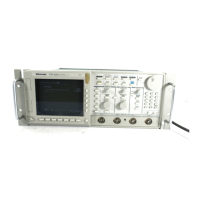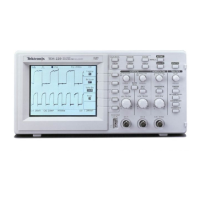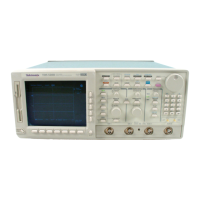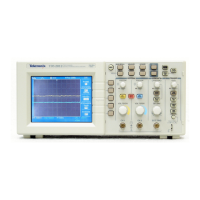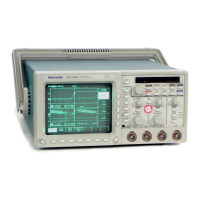Acquiring and Displaying Waveforms
3–44
TDS 684A, TDS 744A, & TDS 784A User Manual
Next Acquired
Waveform
Record
Next Acquired
Waveform
Record
1st Set of Acquired
Waveform Records
Next Set of Acquired
Waveform Records
Next Set of Acquired
Waveform Records
Display Updated Display Updated Display
Variable Persistence
Display
Updated Variable
Persistence Display
Updated Variable
Persistence Display
Dead Time Dead Time Dead Time
Normal DSO Mode
InstaVu Mode
1st Acquired
Waveform
Record
Waveform
Memory
Bit Map
Waveform
Memory
Waveform
Memory
Waveform
Memory
Waveform
Memory
Bit Map
Waveform
Memory
Bit Map
Figure 3–26: Normal DSO Acquisition and Display Mode Versus InstaVu Mode

